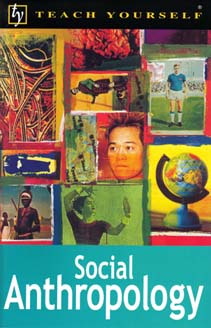

Social anthropology began as the science of the exotic and 'savage', but anthropologists have extended the range of their discipline to include the most 'advanced' societies, and everything in between. The materials made available are linked to the author's simultaneously published book Teach Yourself Social Anthropology (London, Hodder and Stoughton, 2000). They describe a seven week course in social anthropology at a summer school in the Polish city of Cracow. Postcommunist society is neither exotically strange nor reassuringly familiar to the participants, who learn to apply and deepen their knowledge in a variety of activities outside the classroom.
Chapter 2 : History of Anthropology
Chapter 3 : Time and Space Coordinates
Chapter 4 : Doing Social Anthropology
Chapter 6 : Work
Chapter 7 : Exchange
Chapter 8 : Property
Chapter 9 : Consumption
Chapter 11 : Societies and States
Chapter 12 : Conflict and Violence
Chapter 13 : Law and Order
Chapter 14 : Symbols and Ideologies
Chapter 16 : Modes of Thought
Chapter 17 : Modes of Action
Chapter 18 : World Religions
Chapter 19 : Civil and Uncivil Religion
Chapter 21 : Descent and Procreation
Chapter 22 : Sex and Marriage
Chapter 23 : Families and Households
Chapter 24 : Contingent and Primordial Identities
Chapter 25-2 : Skansen
Chapter 25-3 : Harvest
Chapter 25-4 : Fieldwork Puzzles
Chapter 25-5 : Synagogue
Chapter 25-6 : Bazar
Chapter 25-7 : History
Chapter 25-8 : City Tour
Chapter 25-9 : Ukraine
Chapter 25-10 : Border
Chapter 25-11 : Assumption